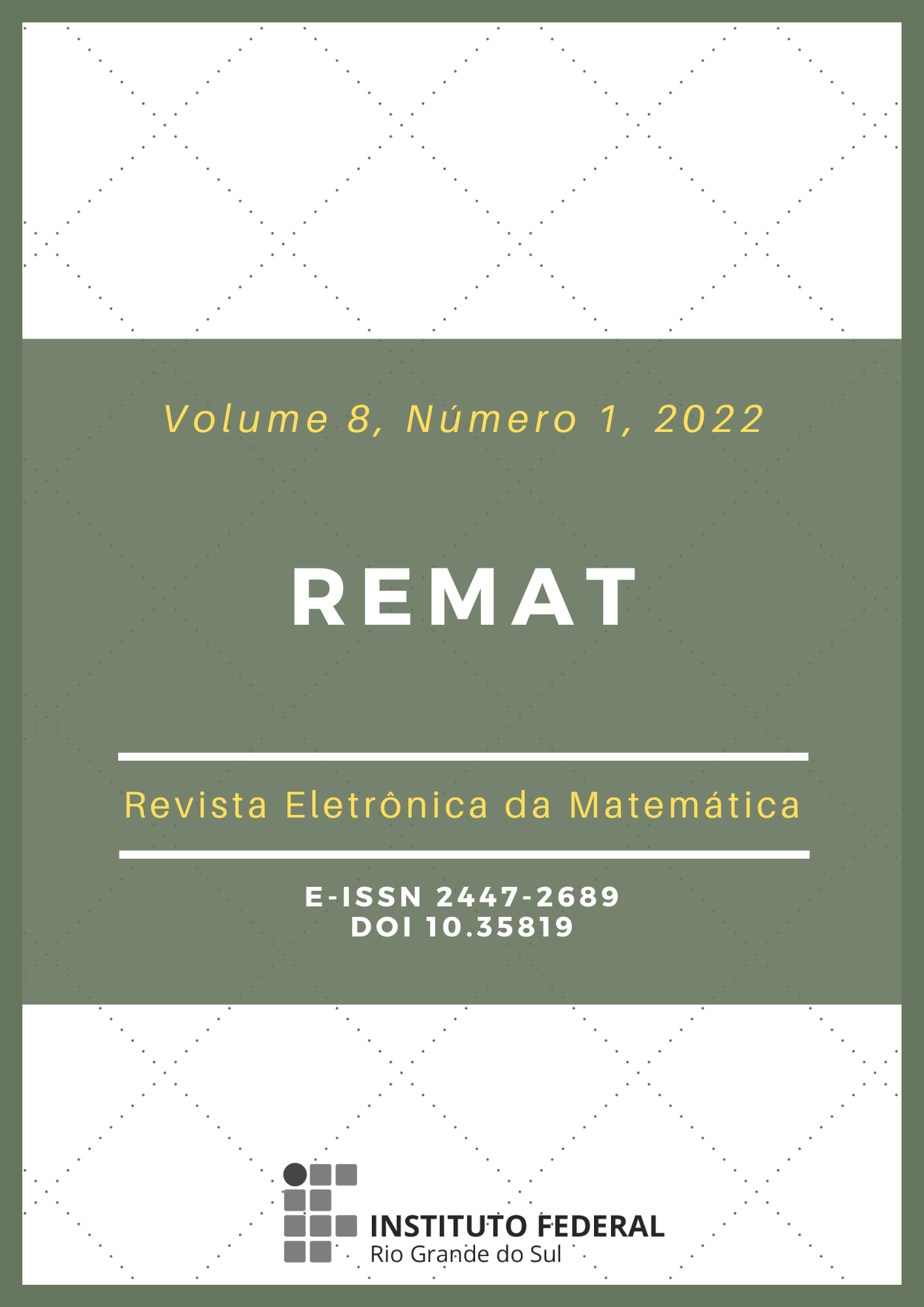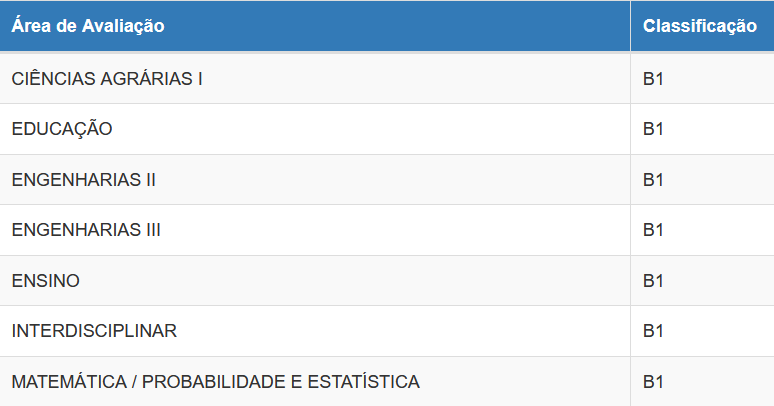Proportional Division: an investigation of the strategies used by High School graduates
DOI:
https://doi.org/10.35819/remat2022v8i1id5154Keywords:
Mathematics Education, Proportional Reasoning, Studant Strategies, High SchoolAbstract
This article aims to analyze the strategies used by 3rd-grade high school students to solve a situation involving the idea of proportional division in the ratio of 3 to 1. It is a qualitative research, carried out in a private school in the metropolitan area of São Paulo, SP, Brazil, with 43 students from two groups finishing basic education. Data collection was carried out through the presentation of problem situations in a questionnaire ? of a diagnostic nature ?, which were solved and sent digitally by e-mail to the coauthor of the article, who is their mathematics teacher. Students were requested to solve resolutions in different ways, if possible. As for the solution, the analysis revealed that most of the students used algebra (equation modelling and equation systems), while the others used arithmetic (notions of division, fraction, triple, and partition). The need for a broader focus on the didactic approach of this type of reasoning in high school was identified.
Downloads
References
BEHR, M.; HAREL, G.; POST, T.; LESH, R. Rational number, ratio and proportion. In: GROUWS, D. A. (Ed.). Handbook of Research on Mathematics Teaching and Learning. New York: MacMillan,1992. p. 296-333.
BOGDAN, R. C.; BIKLEN, S. K. Investigação qualitativa em educação. Tradução de Maria João Alvarez, Sara Bahia dos Santos e Telmo Mourinho Baptista. Porto: Porto Editora, 1994.
BRASIL. Ministério da Educação. Secretaria da Educação Fundamental. Parâmetros Curriculares Nacionais: Matemática. v. 3. Brasília: MEC/SEF, 1997. Disponível em: http://portal.mec.gov.br/seb/arquivos/pdf/livro03.pdf. Acesso: 3 mar. 2022.
BRASIL. Base Nacional Comum Curricular. Brasília: MEC, 2018. Disponível em: http://basenacionalcomum.mec.gov.br/images/BNCC_EI_EF_110518_versaofinal_site.pdf. Acesso em: 6 set. 2020.
FARIA, R. W. S. C.; MALTEMPI, M. V. Raciocínio proporcional na matemática escolar. Revista Educação em Questão, Natal, v. 58, n. 57, p. 1-18, 3 set. 2020. DOI: https://doi.org/10.21680/1981-1802.2020v58n57ID20024.
LAMON, S. J. Teaching Fractions and Ratios for Understanding: Essential Content Knowledge and Instrutional Strategies for Teachers. 2. ed. Mahwa: Lawrence Erlbaum Associates Publishers, 2006.
LESH, R.; POST, T.; BEHR, M. Proportional reasoning. In: BEHR, M.; HIELBERT, J. (Ed.). Number concepts and operations for the middle grades. Hillsdale: Lawrence Erlbaum, 1988. p. 93-118.
NCTM. National Council of Teachers of Mathematics. Curriculum Evaluation: Standards for School Mathematics. Washington: NCTM, 1989.
PONTE, J. P. da; BRANCO, N.; MATOS, A. Álgebra no Ensino Básico. Lisboa: Ministério da Educação, 2009. Disponível em: https://repositorio.ul.pt/bitstream/10451/7105/1/Ponte-Branco-Matos%20(Brochura_Algebra)%20Set%202009.pdf. Acesso em: 13 out. 2020.
SPINILLO, A. G. A importância do referencial de “metade” e o desenvolvimento do conceito de proporção. Psicologia: Teoria e Pesquisa, Brasília, v. 8, n. 3, p. 305- 317, 1992. Disponível em: https://www.gestaoesaude.unb.br/index.php/revistaptp/article/view/17142. Acesso em: 2 mar. 2022.
VERGNAUD, G. A criança, a matemática e a realidade. Curitiba: Editora UFPR, 2009.
Downloads
Published
How to Cite
Issue
Section
License
Copyright (c) 2022 REMAT: Revista Eletrônica da Matemática

This work is licensed under a Creative Commons Attribution 4.0 International License.
REMAT retains the copyright of published articles, having the right to first publication of the work, mention of first publication in the journal in other published media and distribution of parts or of the work as a whole in order to promote the magazine.
This is an open access journal, which means that all content is available free of charge, at no cost to the user or his institution. Users are permitted to read, download, copy, distribute, print, search or link the full texts of the articles, or use them for any other legal purpose, without requesting prior permission from the magazine or the author. This statement is in accordance with the BOAI definition of open access.

































